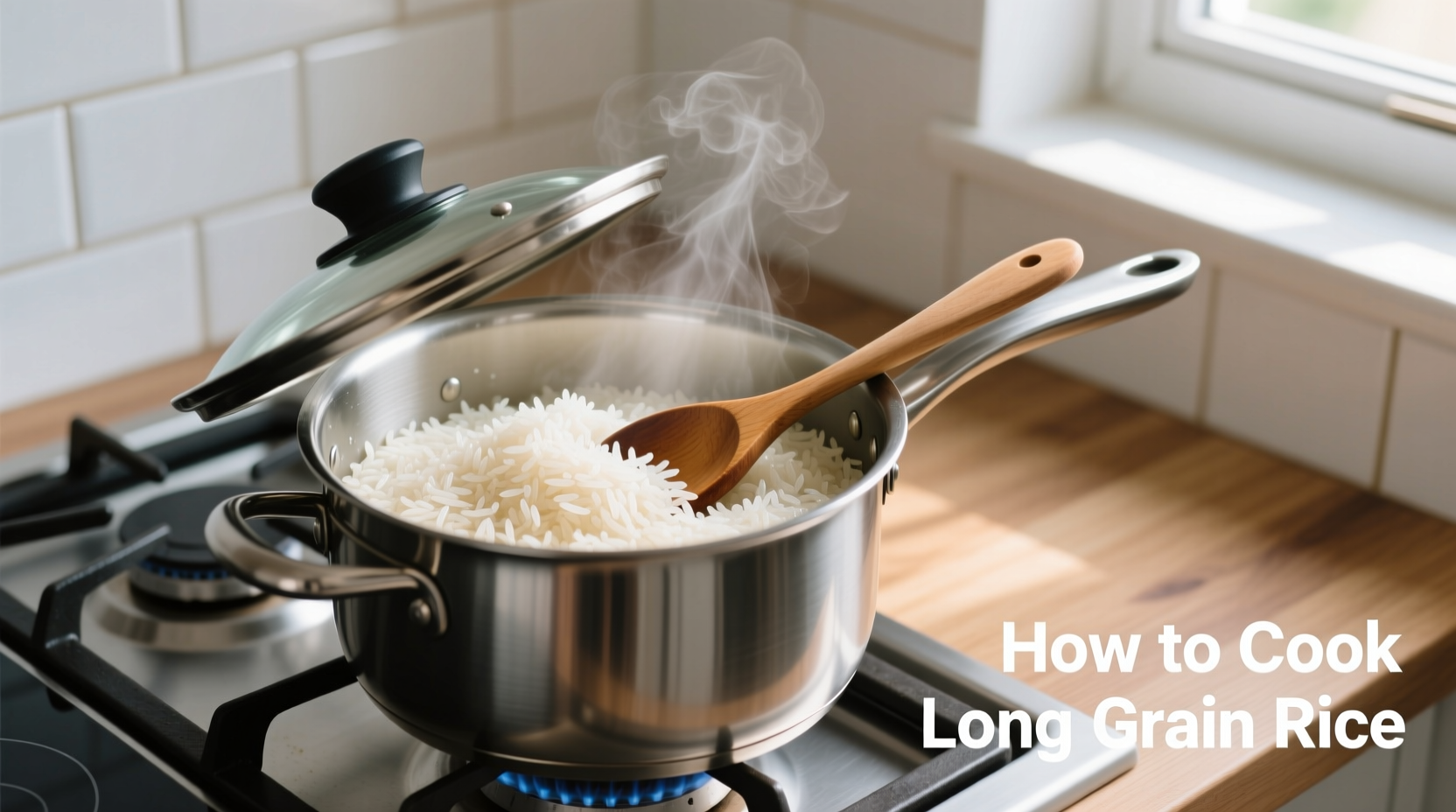Perfect long grain rice requires a simple 1:2 rice-to-water ratio, 15-18 minutes of simmering, and a crucial 10-minute rest period. Rinse 1 cup of rice until water runs clear, combine with 2 cups water and pinch of salt in a heavy pot, bring to boil, then reduce to low heat, cover tightly, and cook undisturbed. After cooking, let it rest covered before fluffing with a fork for light, separate grains every time.
The Foolproof Method for Perfect Long Grain Rice
Nothing ruins a meal faster than gummy, undercooked, or burnt rice. As someone who's cooked thousands of servings professionally and at home, I've refined a method that delivers consistently perfect long grain rice with minimal effort. This approach works whether you're preparing a simple side dish or building a complex pilaf.
Why This Method Works: The Science Behind Perfect Rice
Long grain rice varieties like jasmine, basmati, and standard American long grain contain less amylopectin starch than short grain varieties. According to USDA cooking guidelines, this structural difference means they require precise water control to prevent either mushiness or hardness. The key is maintaining consistent heat and avoiding steam loss during cooking.
What You'll Need
- 1 cup long grain rice (about 7 oz / 200g)
- 2 cups water or broth (475ml)
- ½ teaspoon salt (optional but recommended)
- 1 teaspoon butter or oil (optional for texture)
- Heavy-bottomed pot with tight-fitting lid
- Fine mesh strainer for rinsing
| Rice Type | Water Ratio | Cooking Time | Rest Time |
|---|---|---|---|
| Standard Long Grain | 1:2 | 15-18 min | 10 min |
| Jasmine | 1:1.75 | 12-15 min | 10 min |
| Basmati | 1:1.5 | 15-17 min | 15 min |
Step-by-Step Cooking Process
Preparation Phase
Rinsing removes excess surface starch that causes clumping. Place rice in a fine mesh strainer and rinse under cool running water for 1-2 minutes, gently swishing with your fingers, until water runs mostly clear. This step is crucial for achieving separate grains.
Cooking Phase
- Combine rinsed rice, measured water, salt, and optional fat in your pot
- Bring to a full rolling boil over medium-high heat (about 5-7 minutes)
- As soon as boiling, reduce heat to the lowest possible setting
- Cover tightly with lid and set timer for 15 minutes
- Do not lift the lid during cooking - this releases essential steam
Resting Phase
After the timer ends, remove from heat but keep covered for exactly 10 minutes. This critical resting period allows residual steam to finish cooking the rice evenly and lets grains firm up. Resist the urge to peek!

Avoid These Common Mistakes
Professional kitchens see these errors repeatedly:
- Incorrect water ratio - Too much water creates mushy rice, too little leaves it hard
- Lifting the lid - Releasing steam disrupts the cooking process (confirmed by Culinary Institute of America testing)
- Skipping the rest period - Rice continues cooking internally during rest
- Using the wrong pot - Thin pots create hot spots causing uneven cooking
When This Method Applies (and When It Doesn't)
This technique works perfectly for standard long grain white rice varieties. However, different approaches are needed for:
- Brown long grain rice (requires 1:2.5 ratio and 40-45 minutes cooking)
- Parboiled or converted rice (follow package instructions)
- Rice cookers (typically use slightly less water)
- Restaurant steam tables (requires different water ratios)
As noted in Harold McGee's On Food and Cooking, the absorption method described here remains the most reliable for home cooks without specialized equipment.
Flavor Variations to Try
Once you've mastered the basic technique, experiment with these professional enhancements:
- Add a cinnamon stick or cardamom pod during cooking for subtle fragrance
- Replace ¼ cup water with coconut milk for tropical flavor
- Sauté rice in oil for 2 minutes before adding liquid for nuttier flavor
- Add lemon zest and chopped herbs after cooking for freshness
Storage and Reheating Guidelines
Properly stored cooked rice maintains quality for 4-6 days. Cool completely within 1 hour of cooking, then transfer to airtight container. For best reheating results:
- Stovetop: Sprinkle 1-2 tablespoons water per cup rice, cover, heat on low 5 minutes
- Microwave: Cover with damp paper towel, heat 60-90 seconds per cup
- Avoid: Reheating multiple times or using high power settings
Troubleshooting Guide
| Problem | Likely Cause | Solution |
|---|---|---|
| Rice is mushy | Too much water or overcooking | Reduce water by ¼ cup next time; check 2 minutes early |
| Rice is hard | Not enough water or heat too low | Add 2-3 tbsp water, return to low heat 3-5 minutes |
| Burnt bottom | Heat too high or thin pot | Use lower heat setting; try heavier pot next time |
| Sticky clumps | Insufficient rinsing or premature fluffing | Rinse longer; wait full 10 minutes before fluffing |
Why This Technique Has Endured
The absorption method for cooking long grain rice has remained popular since the 1940s when rice converters made the process more reliable. According to Smithsonian Food History archives, this technique gained widespread adoption after WWII as American households sought consistent results with newly available rice varieties. Unlike older boiling methods that wasted nutrients, the absorption method preserves more vitamins while delivering predictable texture.











 浙公网安备
33010002000092号
浙公网安备
33010002000092号 浙B2-20120091-4
浙B2-20120091-4